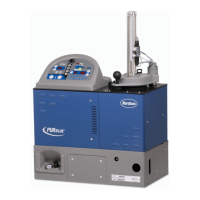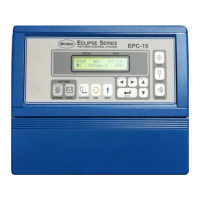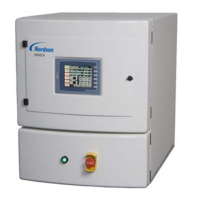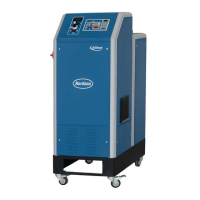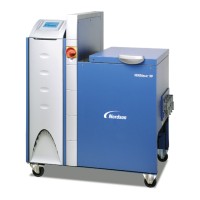Introduction
2-2
P/N 7135268B
E 2008 Nordson Corporation
PURBlue EC
Residual Risks
In the design of the unit, every measure was taken to protect personnel
from potential danger. However, some residual risks can not be avoided:
S Risk of burns from hot material
S Risk of burns when filling the tank and from the tank lid
S Risk of burns when conducting maintenance and repair work for which
the melter must be heated up
S Risk of burns when attaching and removing heated hoses
S Material fumes can be hazardous. Avoid inhalation
S Risk of damage to cables/lines belonging to the customer, if they were
installed such that they come into contact with hot or rotating parts
S The safety valve and parts of the inert gas equipment may malfunction
due to hardened or charred material.
Definition of Terms
Inert Gas
The inert gas prevents the material in the tank from reacting to humidity. It
displaces the air in the tank and protects the material from an unintended
reaction, which could cause the material to harden prematurely.
Inert gases are e.g. nitrogen (N) and carbon dioxide (CO
2
).
An air dryer can condition compressed air such that it can be used as inert
gas.
CAUTION: Use only suitable inert gas. Information can be obtained from
the Material Safety Data Sheet or the manufacturer of the material in the
tank.
Key-to-line
Referred to in Nordson literature as either Key-to-line (KTL) or Automatic
mode.
In key-to-line the motor/pump speed is regulated proportionally to the speed
of the parent machine.

